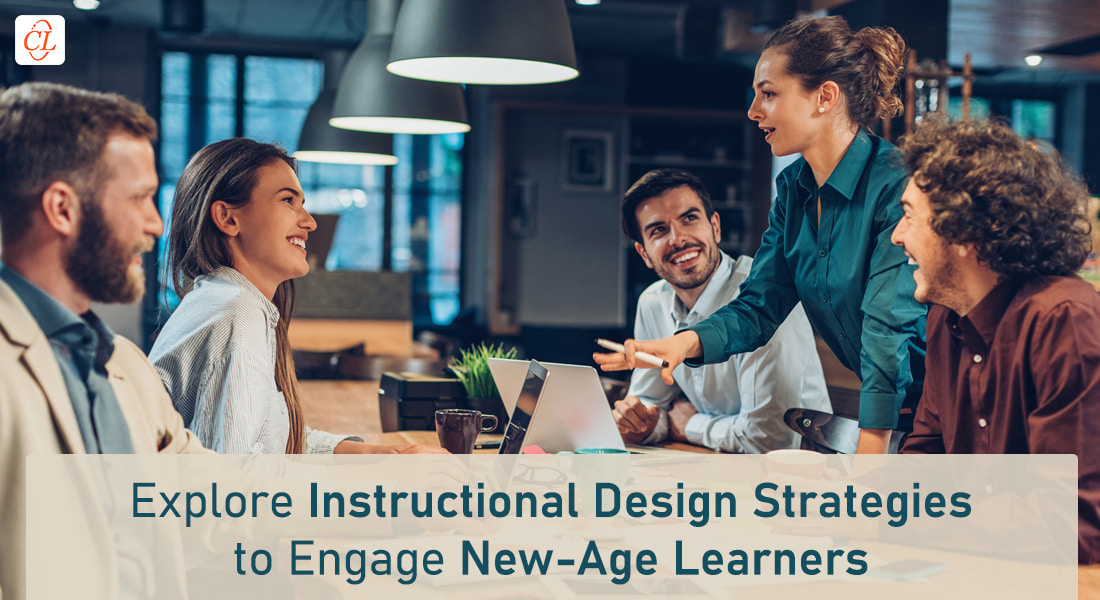Impressive ID Strategies to Grab the Attention of Your New-Age Learners

Let’s admit it. Instructional design continues to be one of the most popular approaches in corporate training. As many organizations explore expanding their eLearning programs, it’s critical that they evaluate not only the content but also how their training is delivered. Effective instructional design strategies not only capture the learner’s attention, but also focus on offering high-quality information that incorporates personalization and new experiences.
In this blog, we examine the top 5 instructional design strategies that your eLearning developers need to improve the efficacy of your online learning courses.
With These ID Strategies You Can Design Engaging eLearning Courses for Your New-Age Learners
The 5 essential new-age learning strategies are:
- Microlearning
- Gamification
- Personalization
- Mobile Learning
- Video-Based Learning
New age Instructional Design Strategies
1. Microlearning
Microlearning is a versatile and successful training strategy that you can apply in many ways to improve employee and organizational performance. It provides learning in bite-sized nuggets, each addressing a specific learning goal. Learning material is chunked to make sure the load on the learner’s memory is manageable while also increasing their capacity to gain, recall, and hold on to information. It also has the added advantage of being immediately available through mobile devices, enabling learners access and allowing them to engage with the knowledge they want right when they need it.
2. Gamification
Gamification is an instructional design method that goes the extra mile to make learning more enjoyable. It’s a method of incorporating games and gaming components into training programs. With gaming formats and methods, your eLearning activities can increase learner participation and engagement. Gamification makes eLearning courses more entertaining, immersive, and accessible, resulting in improved uptake and sustained engagement.
Trending Corporate Training Strategies You Must Know About
3. Personalization
Personalization in eLearning is the customization of a course where it can meet the specific needs of each learner. Personalization is where you give learners the choice of:
- Avatars
- Changing themes, fonts, backgrounds
- Customizing the format of content such as audio bytes and video clips
- Personalizing their learning path
4. Mobile Learning
Mobile learning accommodates learners’ choices, and it saves their time, ensuring that today’s millennial workforce is engaged and motivated. In a nutshell, it gives ‘anytime-anywhere’ accessibility to both trainers and learners. Mobile learning is a self-paced online training environment that learner’s access through tablets and smartphones.
However, mobile learning is more than just the gadget; it also consists of new age learning methodologies. If you have decided to develop mobile learning, then there are two methods that are critical for you to focus on. The strategies are:
- Learning Design
- Technology
5. Video-Based Learning
As the name suggests, video-based learning is a type of eLearning that allows its learners to pick up skills and information through the video format. It’s gaining popularity and is replacing the traditional and boring “Click Next” type of eLearning. Companies use eLearning videos for several purposes, including recruiting, reinforcing, and testing their workers’ expertise in specific areas of operation.
Video-based learning allows learners to remember information for longer time periods. You can easily integrate these videos with your eLearning courses to increase their efficacy, or you can use them as standalone learning material.
Parting Thoughts
It’s critical to pay close attention to your instructional design strategy. You need to make sure that they are both entertaining and effective. Check out our eBook on “Instructional Design Strategies to Design Engaging eLearning Courses” and get more insights on specific strategies that you can use when developing engaging online learning programs. Download now!




![5 Instructional Strategies to Gain Learners’ Attention [Infographic]](https://blog.commlabindia.com/hubfs/Imported_Blog_Media/instructional-design-tips-for-custom-elearning-Jul-04-2023-04-37-27-1306-AM.jpg)
![10 Learning Design Strategies to Engage Learners [Infographic]](https://blog.commlabindia.com/hubfs/Imported_Blog_Media/ten-learning-design-strategies-infographic.jpg)